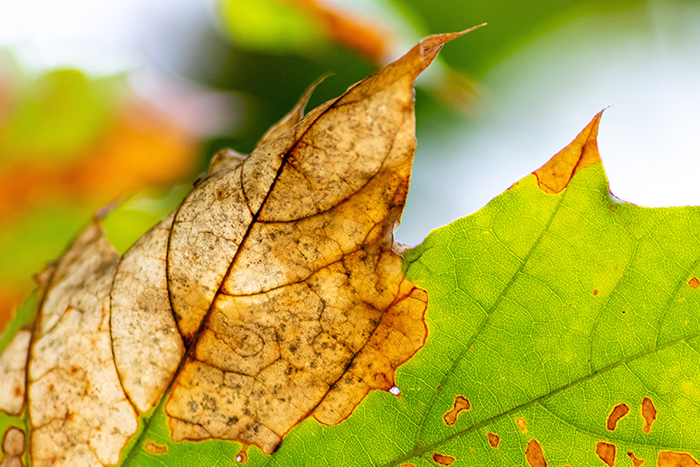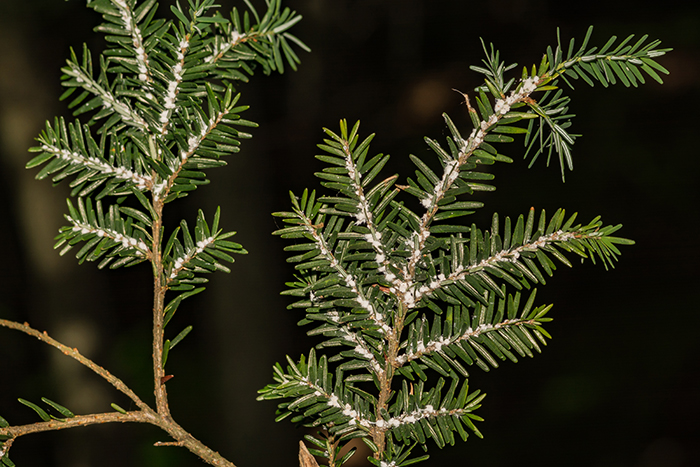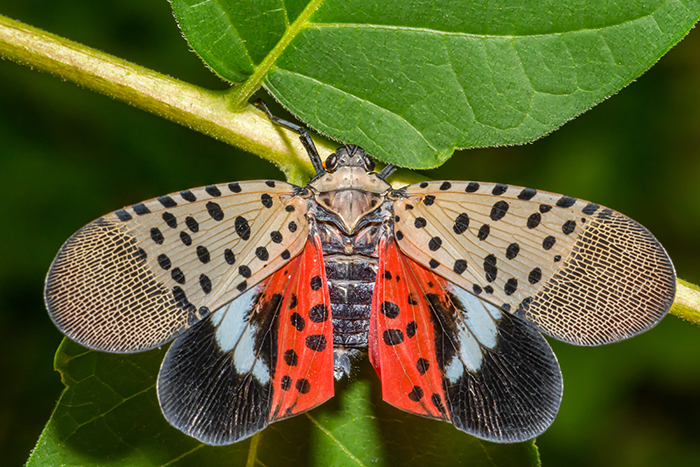Top three invasive species to watch for as Spongy Moth declines
June 21, 2023 (CALEDON, ON) – The spongy moth outbreak that peaked in 2021 has declined significantly this year. The spongy moth is still present in some regions of Ontario, however outbreak areas and severity will continue to decline in 2023.
It’s important to turn our focus to other invasive forest pest species that could impact our region in the near future.
Oak Wilt
Recently reported in Niagara Falls, oak wilt is a disease caused the fungus Bretziella fagacearum, which affects all oak trees, especially red oaks. The disease is spread through the root systems of infected trees and by insects who visit infected oaks. Symptoms of oak wilt include leaf discoloration; premature leaf drop; wilting; branch dieback; cracking of trunks; and a white-grey fungus that grows under the bark causing a tree to die as early as one year after infection. To limit the spread of oak wilt avoid pruning oak trees from April to July.

Hemlock Woolly Adelgid
Hemlock woolly adelgid (HWA) is an invasive aphid-like insect that attacks and kills hemlock trees. The HWA attach to the needles on tree branches and feed on the water and nutrients. Eastern Hemlock trees are the primary host of HWA, however other hemlock species have been impacted. Symptoms include white “woolly” moving sacs at the base of hemlock needles; premature branch bud and shoot dieback; premature needle loss; dieback of twigs and branches; and discoloration of needles. Severe infestations can lead to tree death. Avoid hanging bird feeders near or within hemlock trees or stands.

Spotted Lanternfly
The spotted lanternfly (SLF) is an invasive planthopper species that damages plants by sucking the nutrients out of leaves and stems. The SLF has three life cycle stages (egg, nymph, and adult) and target different plant species depending on the life cycle stage it is in. Impacted tree and plants include tree of heaven, willows, maples, poplars, cherries and plums, apples, pine, and grape vines. Signs of a SLF infestation on a host plant include muddy-grey egg masses; sticky sap-like fluid running down the stem or collecting at the base of the stem (sometimes layered with black mold); increased bee and wasp activity; and swarms of SLF adults. Avoid planting tree of heaven, it is the main host plant of SLF and is also considered an invasive species!

Reporting and Prevention
Although these forest pests have not been reported in Caledon at this time, early detection reporting is a key component of successful invasives species management. If you believe you have any of these three invasive species on your property, or you notice it in your community, please report it to the Canadian Food Inspection Agency, the Invasive Species Centre or on EDDMaps.
One simple way you can help avoid the spread of all three of these invasive species is by not moving your firewood. If you’re travelling and looking to have a bonfire, buy local firewood!
If you are still seeing spongy moth on your property, there are ways you can protect your trees.
- In the spring and early summer, property owners can have spongy moth infested trees sprayed with registered pesticides by a licensed insecticide application company;
- In the spring and early summer, wrapping burlap around your trees can help trap moving larvae, allowing them to be physically removed and terminated; and
- In the fall, property owners can remove and destroy egg masses, if/when they’re discovered.
For more details on these invasive species and more, please visit our Trees and Yards page on our website at Caledon.ca/Trees-Yards.



 Subscribe to this page
Subscribe to this page